 Overview
Overview
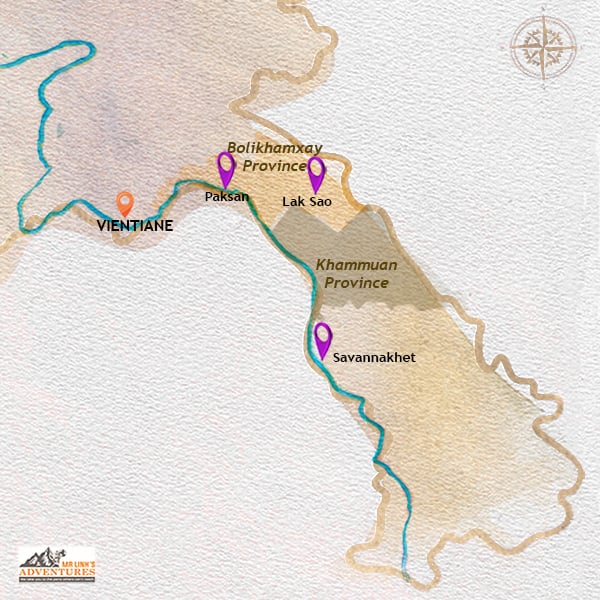 Bolikhamsai and Khammuan
Bolikhamsai and Khammuan, in Laos, offer untouched and wild nature, a rarity in this region of Southeast Asia. The terrain, gently rising from the Mekong Valley, is punctuated by deep caves and verdant jungles. Bordered by the Mekong River and Thailand to the west, and by the Annamite Range and Vietnam to the east, these provinces, mainly populated by lowland Lao people, are also home to a minority of Makong/Bru and some Thai tribes.
Here, travelers in search of adventure and discoveries off the beaten path will be delighted.
Here, six national parks, with the Tham Kang Lor cave at their heart, invite exploration. However, this idyllic nature is threatened by industrial development. A trip is essential before the landscapes are irreversibly transformed.
 Top Attractions
Top Attractions
Tham Kong Lo - or Kong Lor Cave. a geological wonder of Southeast Asia
Sparsely populated, Bolikhamsai and Khammuan Provinces offer a level of untouched natural glory that is rarely found elsewhere in Laos or indeed all of South East Asia.
Tham Kong Lor Cave
A jewel of the region, this cave, more than 7 km long, is one of the largest in the world. It is explored by pirogue, letting yourself be guided by the current of the Hinboun River that flows through it. A grandiose spectacle!
Phou Hin Boun National Park
This nature sanctuary is home to exceptional fauna and flora. You can hike through landscapes of karst mountains, waterfalls, and dense forests.
Tad Xay and Tad Leuk Waterfalls
These refreshing waterfalls are the ideal place for a swimming break in the heart of nature. You can reach them by scooter or bicycle, through verdant landscapes.
Tha Khaek City
This charming town, located on the banks of the Mekong, is the ideal starting point for exploring the surrounding area. It has many temples, colorful markets, and a warm atmosphere.
 See & Do
See & Do
Typical riverside village in Bolikhamsay Province
Paksan, the gateway to central Laos, is an ideal stop for travelers coming from the north. Although the city itself is of little interest, it offers a convenient base with a few restaurants and accommodations, allowing you to rest before continuing the adventure.
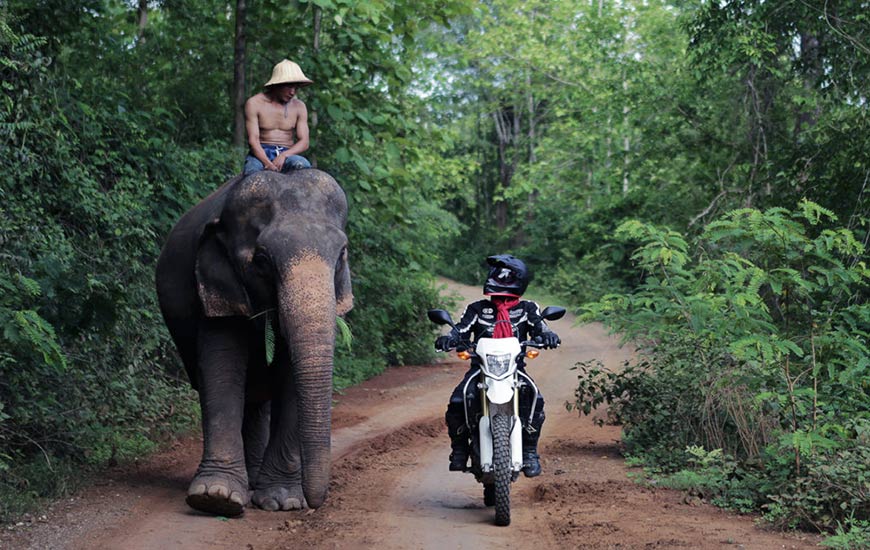 The Central Laos motorbike Loop
The Central Laos motorbike LoopFollowing Route 13 east, you will discover Pak Kading, a peaceful village offering magnificent views of the confluence of the Mekong and Kading Rivers. The latter, of exceptional purity, crosses a beautiful valley and gives access to the Nam Kading National Park. While the park contains a plethora of rare animal species, it is as usual rare to get an actual glimpse of these, but walking through the jungle you will experience a cacophony of animal cries and noises. Travellers should bear in mind that access to the park can be tricky at times, as the local government sometimes shuts down river access.
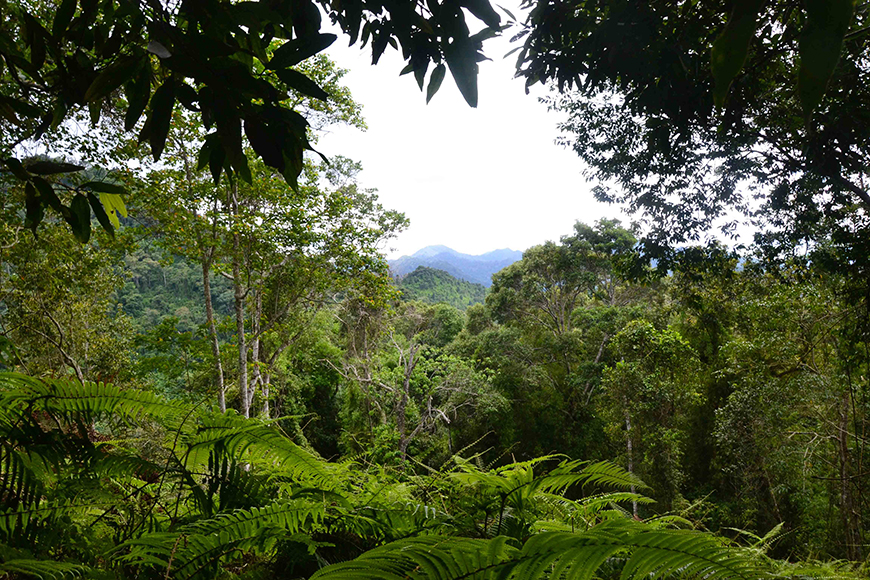
Nam Kading National Park, one of the most important protected forest areas - Photo : WCS Laos
Tham Kang Lo, the undisputed jewel of central Laos, offers a unique underground adventure. This 7.5-kilometer cave, crossed by a river, is explored by boat. Bring good shoes and a flashlight for optimal exploration. The village of Ban Kong Lor, an ideal starting point, has developed around this major attraction. Further east, Lak Sao, a transit village on the road to Vietnam, serves as a stopover for motorcyclists traveling the famous central Laos loop.
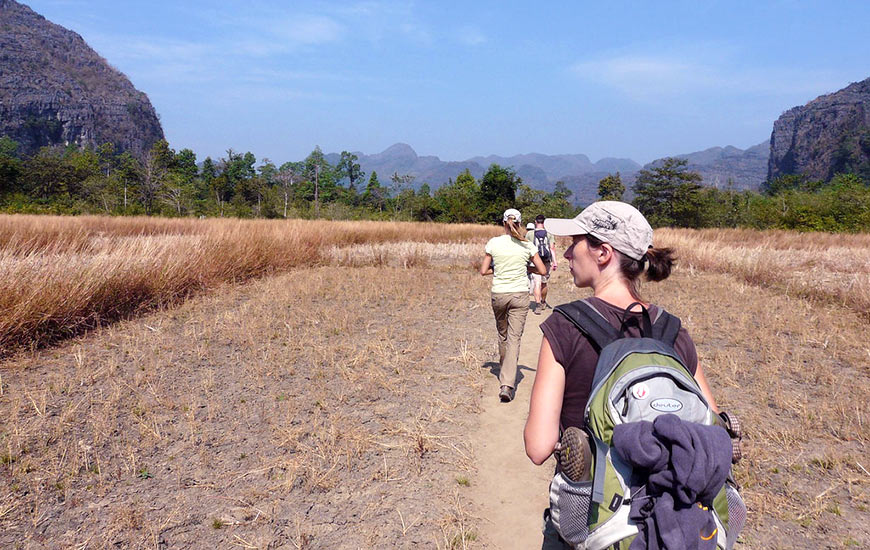
Phu Hin Bun National Park, the enchanting landscape
Tha Khaek, although less refined than Luang Prabang or Vientiane, is the ideal base for exploring the natural wonders of central Laos. Nearby, the Phu Hin Bun National Park, with its turquoise rivers and spectacular cliffs, offers enchanting landscapes. Caving enthusiasts will not miss discovering Tham Pa Seuam, a fascinating cave accessible by kayak.
 Go Green
Go Green
Mr. Linh's Adventure, a local agency specializing in tailor-made and off-the-beaten-path travel, offers several tours in the provinces of Bolikhamsai and Khammuan. These tours are designed for travelers seeking adventure, discovery, and sharing.
They include:
Discovery of the must-see sites: Tham Kong Lor, the Tad Xay and Tad Leuk waterfalls, the Phou Hin Boun National Park...
Varied activities: hiking, kayaking, mountain biking, swimming, elephant trekking...
Meeting with local communities: an opportunity to discover their culture, their crafts, and their way of life.
Immersion in nature: grandiose landscapes, exceptional fauna and flora.
 Heritage
Heritage
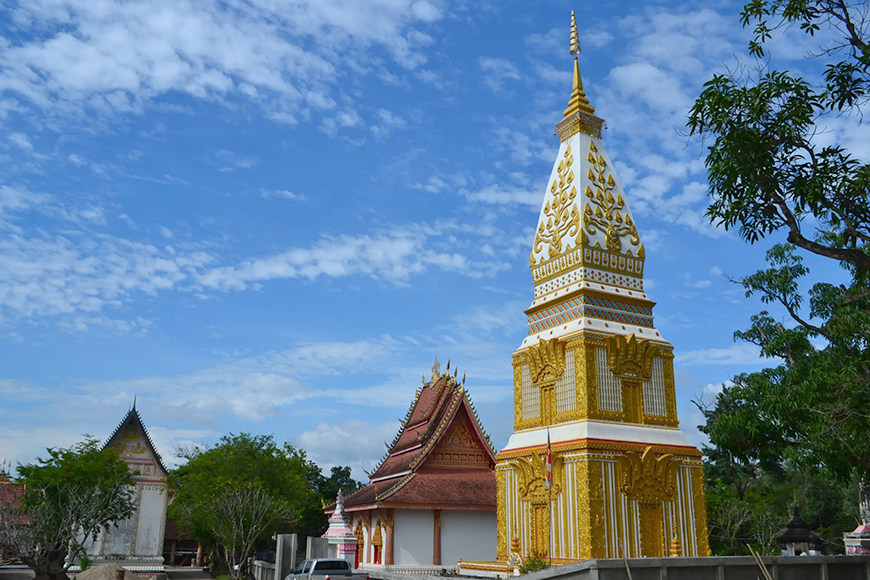 Wat Phabat is an important pilgrimage site with its huge “footprint” of Buddha
Wat Phabat is an important pilgrimage site with its huge “footprint” of Buddha
The provinces of Bolikhamsai and Khammuan have a rich history, marked by the influence of the Lan Xang kingdom and the kingdom of Siam.
Bolikhamsai, a province created in 1986, bears traces of a past rich in invasions and cultural exchanges. The 19th-century French missionary influence, notably through religious architecture, testifies to this history. The Wat Phabath, an important pilgrimage site housing a footprint of the Buddha, and the spectacular karst formations of the Khamkheuth district, are must-sees in the region.
Khammuan, for its part, is a province where Lao culture blends with that of the Makong/Bru, who represent about 10% of the population. Traditional crafts, particularly pottery and weaving, are a local wealth that is highlighted during festivals. The Nakai-Nam Theun National Park, one of the largest in the country, is home to exceptional biodiversity and important cultural sites.
 Food & Drinks
Food & Drinks
Tha Khaek, the place to be to savor local cuisine
While the region is not distinguished by unique culinary specialties, Tha Khaek is undoubtedly the high place of local gastronomy. Grilled meats, especially duck and chicken, are in the spotlight in the many restaurants that line the fountain square.
 Directions
Directions
Location
The provinces of Bolikhamsai and Khammuan are located in central Laos.
How to get there
They can be reached by bus from Vientiane (about 6 hours of travel) or by plane from Hanoi (regular flights).
Bus ticket prices vary depending on the companies and classes, but you should expect to pay around 10 to 15 euros for a Vientiane-Tha Khaek trip. Hanoi-Vientiane flight prices vary depending on the companies and periods, but you should expect to pay an average of 100 to 200 euros.
Best time to visit
The best time to visit these provinces is from November to March, during the dry season. The temperatures are pleasant, and the sky is sunny.